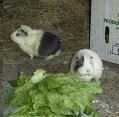|
 Home Home
 What's New? What's New?
 Definition Definition
 Our Design Our Design
 Techniques Techniques
 Articles Articles
 Blog Blog
 About Us About Us
 Year Planner Year Planner
 Resources Resources
 Links Links

Like us on
FaceBook!

Link to this site
|
|
Permaculture Techniques - Energy Harvesting
Description
Determining energy flows within the system as a whole, and utilising efficiently all energy available; also creating and recycling energy in the system. Energy flows include those generated by the sun (solar, wind, plant systems), water (flowing or stored), gravity (slope planning), and people (social interactions, imagination). Energy harvesting considers zones (energy needs and yields determined by frequency of use or visits) and sectors (utilisation and management of off-site energy sources), relative location of elements in systems (energy harvesting from symbiotic relationships due to mutually beneficial positioning of elements), energy available due to edge effect, and both passive and active solar systems.
Benefits
- Reduction of costs in establishing system by using energy elements already present in system.
- Reduction of imported energy (eg firewood, oil, gas, electricity).
- Good feeling (not responsible for polluting systems such as power stations, oil slicks, etc)!
- Increased independence for energy needs, self-reliance and self-responsibility.
- Efficient function of elements with minimal energy input required.
- Greater yields.
- Ability to use elements more than once (recycling).
- Efficient energy planning results in conservation of human energy.
- Ability to turn disadvantages into advantages - by working with rather than against energy flows within and over the system.
Procedure
- Plan site according to observation of climatic conditions, soil type and structure with respect to existing energy flows.
- Determine contours and natural drainage patterns.
- Determine zones and sectors.
- Do necessary terra forming; especially energy collecting, storage and conservation systems.
- Plan location of elements according to functions and yields, maximising the number of functions and yield for each element by careful placement based on the relationships between elements.
- Plan intensive systems on minimal amount of land, using all available space, including vertical.
- Start small and work out from centre as energy yields build as systems build.
- Start with what is there, using imagination and creativity, instead of bringing in materials and resources from off-site.
- Where-ever possible reduce consumption and recycle rather than use new (reduction of energy needs in total human system).
|
|

Our ever-changing view!
Moonset ~ Roll Cloud ~ Sunset
|
permaculture ethics |
care for earth,
care for people,
return surplus,
reduce consumption |
 |
|
Recently Added Pages
Hot Links!

Bookworm is currently reading...
This site is sponsored by
ALWAYS LEARNING BOOKS
Publishers of Australian
books on Home Education.
  The Educating Parent The Educating Parent
  Beverley's other websites Beverley's other websites
|





